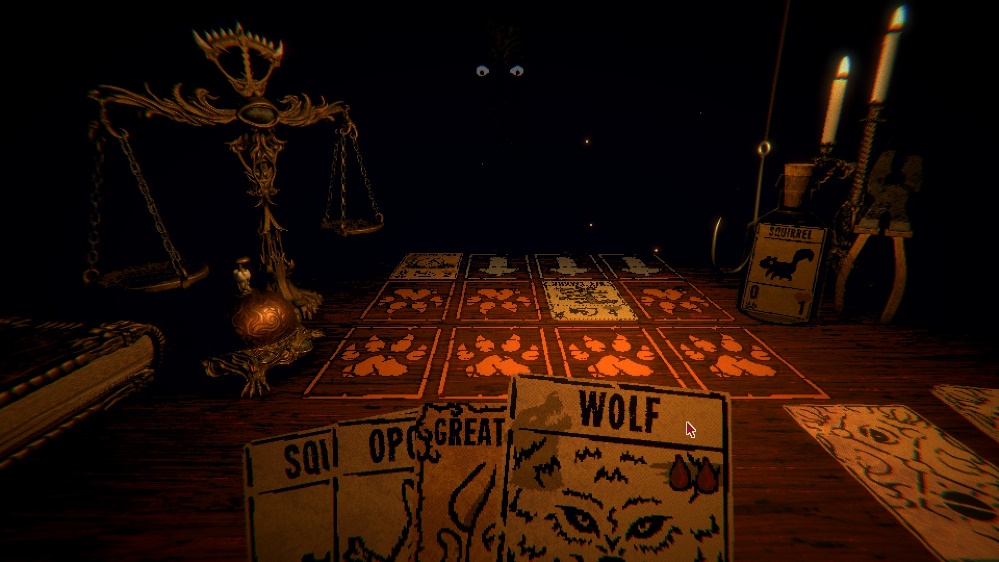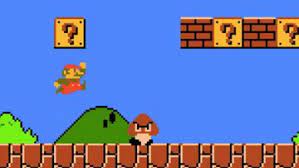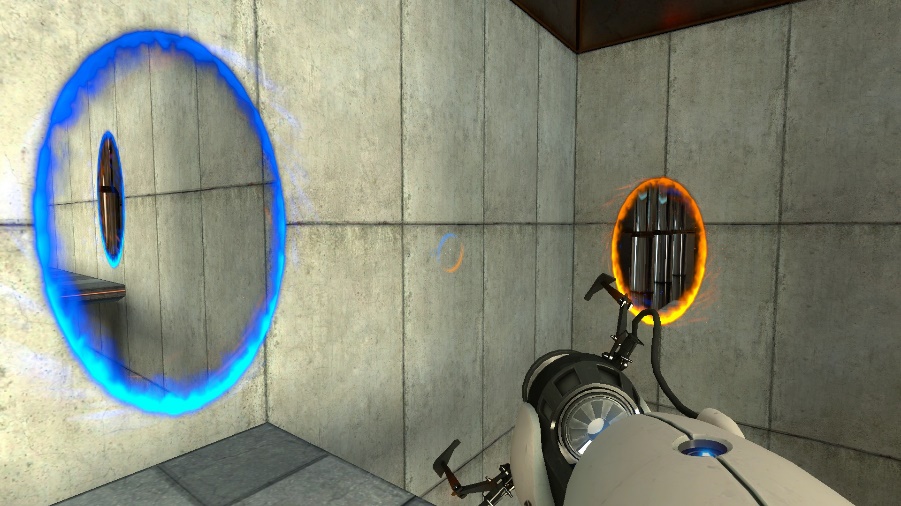1. Introduction
With the advancement of technology, the gradual maturation of techniques, and the robust growth of the gaming market, the gaming industry has been undergoing significant transformations over time, and the field of game design has gradually gained popularity. The scope of this study falls within the realms of mechanism design and level design in game design, aiming to provide game designers with usable or referable patterns for game mechanism design and to consolidate a methodology for game mechanism design validated through historical exemplary game works [1].
Current research on game mechanisms predominantly focuses on areas like “metaverse” and “virtual reality.” Researchers continuously explore how cutting-edge mediums such as virtual reality technology and mixed reality technology can facilitate game mechanisms. They delve into various game forms achievable based on these technologies and mediums [2]. However, most of these designs emphasize distinct game formats, and the content discussed mainly revolves around new game genres that can emerge from specific technologies or interactive methods. However, the depth of these studies concerning specific methodologies for game mechanism design remains relatively shallow.
A methodological approach to the concrete design of game mechanisms can provide a unified foundation for games based on different mediums and employing diverse interactive methods. Regardless of the form a game takes, the means of designing game mechanisms are transferable and common. The role played by game mechanisms remains consistent across all game forms. Enriching the theoretical content in this aspect equips researchers in the gaming industry with fundamental and freely applicable methodologies, enabling them to explore more freely and push the boundaries of game mechanism design and even the development of the gaming industry.
Miguel Sicart defines game mechanics as methods invoked by agents, designed for interaction with the game state [1,3]. The game mechanics explored in this paper lean more towards the design of gameplay on this foundation.
In this paper, we explore the application of a game design pattern that revolves around specific core game mechanisms. This pattern involves introducing additional assisted mechanisms and randomly combining them to generate diverse sub-mechanisms within the game. The primary goal is to enrich gameplay and level design by exploring the interactions between multiple auxiliary mechanisms. However, it is essential to note that while this design pattern is effective for creating refined systems in small to medium-sized games, its application to large-scale games might lead to repetitive content and player disengagement.
2. Definition of the Design Pattern
The game design pattern based on specific core game mechanisms, assisted mechanism design, and random sub-mechanism combination refers to selecting a specific game mechanism as the core gameplay or central game mechanic [4]. This can also be understood as the fundamental playing style of the game. For instance, in card games, it could be “playing cards,” as depicted in Figure 1, the card game “Inscryption”. And in FPS games, it could be “shooting”, for example, the multiplayer FPS game “Overwatch”. Then, based on this core mechanism, additional auxiliary mechanisms are introduced to expand the dimensions of the core gameplay. By exploring various combinations of these auxiliary mechanisms, the goal is to generate sub-mechanisms that can enrich gameplay and level design within the game. However, for larger game designs, this pattern might lead to excessive content repetition, potentially causing player boredom. This design pattern is better suited for creating refined systems in smaller to medium-sized games that are not overly complex.

Figure 1. Card game: Inscryption [4].
3. Specific application and effects of the design pattern in game design
3.1. Specific methodology
3.1.1. Selecting the core mechanism. During the initial design phase, the game designer carefully chooses a suitable core game mechanism. This core mechanism serves as the fundamental gameplay or central framework for subsequent design elements, ensuring cohesion among various game mechanics and maintaining the unity of the gaming experience. The core mechanism can draw inspiration from elements in the natural or social world known to humans [5]. It may involve actions such as “jumping” or “climbing,” physical attributes like “water state transformation” or “magnetic attraction,” or even imaginative concepts like “soul possession” or “zombie infection.” The selection of the core mechanism should align with the intended player experience, as the execution of a core mechanism that evokes “fear” and “excitement” would differ significantly. The primary objective is to choose an intriguing starting point for the game and establish a stable foundation with room for development.
3.1.2. Diverging auxiliary mechanisms. Once the core mechanism is selected, the game designer explores and diverges into various auxiliary mechanisms that are closely related and more specific to the core gameplay. These auxiliary mechanisms provide directions for refining the overall game experience, unlocking the potential of the core mechanism, and expanding its dimensions. At this stage, the designer addresses the question, “How can I make my core mechanism more engaging?” The core mechanism, in its conceptual nature, needs to be explored to reveal its potential and dimensions [6]. The selection of auxiliary mechanisms should remain closely connected to the core mechanism to avoid straying too far from its essence. The designer can create a diverse array of possibilities based on the core mechanism, gradually building the overall framework and gameplay design. The selection and design of auxiliary mechanisms may not need to be overly complex, as simple auxiliary mechanisms can be combined to form more intricate and well-designed sub-mechanisms.
3.1.3. Combining auxiliary mechanisms. Not all auxiliary mechanisms need to be retained; designers need to sift through numerous existing ideas to select auxiliary mechanisms that are suitable and engaging enough for the game. At this point, designers can attempt to design sub-mechanisms through the combination and interaction of different auxiliary mechanisms. These constructed sub-mechanisms will acquire a certain level of complexity and design space. Since they are gradually derived from the core mechanisms, they can also align with the game’’s primary style [7].
Designers can employ these sub-mechanisms to craft intriguing level designs. Of course, designers can also choose not to combine specific random mechanisms. However, in some cases, individual auxiliary mechanisms might appear monotonous or ordinary on their own. Yet, by integrating these auxiliary mechanisms, it is possible to generate sub-mechanisms that are more captivating and profound.
The approach to combining auxiliary mechanisms can involve using multiple auxiliary mechanisms together within the game to create a collective effect. Alternatively, it can entail blending their respective features to construct a novel mechanism.
3.1.4. Streamlining design content. Upon completing the previous steps, the game’s auxiliary mechanisms and the resulting sub-mechanisms may become numerous, and there might be similarities or repetitions in gameplay. Integrating all these elements into the game could lead to excessive complexity and repetitiveness, making level design challenging. Therefore, the designer must carefully consider factors such as game content, pacing, desired player experience, and select the necessary mechanisms to maintain a coherent and enjoyable gaming experience.
3.1.5. Finishing the game design. Once the overall gameplay and mechanisms are well-established, the designer can proceed with crafting a detailed game design document. This document includes additional elements such as the game’s background story, art style, and user interface design.
The application of this methodology should be flexible and adaptive, serving the specific needs of each game. In some cases, a core mechanism might not provide enough diverse gameplay, while the auxiliary mechanisms derived from it could be more engaging than the core mechanism itself. The key objective of this approach is to explore the depth of a mechanism, making it suitable for games with multiple mechanisms that require thorough exploration. The usage of this method largely depends on the creativity and ingenuity of the designer [8].
3.2. Specific examples
Numerous games on the market have successfully applied such design pattern, each featuring distinct core game mechanisms, auxiliary mechanisms, and resulting outcomes. Here are some examples:
Nintendo’s platform jumping game “Super Mario Bros.” explores various possibilities based on the core game mechanism of “jumping.” As demonstrated by Figure 2, the game expands this core mechanism to include “jumping to defeat monsters,” “jumping to avoid traps,” and “jumping to hit special bricks for rewards or penalties,” creating a series of engaging levels by integrating them into the game’s level design. Every interaction a player can perform within the game is related to the core mechanism of “jumping,” and the level design revolves around this mechanic, s After players initially grasp the controls of the main character, Mario, the game gradually introduces various auxiliary mechanisms through level design. Once the player gains an understanding, these auxiliary mechanisms are combined to provide a more intricate design, significantly reducing the learning curve and entry barrier for the game. This approach offers players an engaging and appropriately challenging gaming experience.

Figure 2. Super Mario Bros [9].
The running game “Celeste” focuses on allowing players to move their characters freely, with the core mechanism being a combination of “jumping, dashing, and climbing.” The game introduces auxiliary mechanisms like “regaining dashes by collecting strawberries” and “maneuvering to avoid spikes.” By integrating these mechanisms, the game provides players with levels where they need to carefully navigate through traps using their movement abilities and reach the destination with skillful operations, as illustrated by Figure 3 showcasing such a level. The game’s objectives and playing experience are clear, allowing players to focus on refining their skills and easily get into the game.

Figure 3. Celeste [10].
Valve’s 3D first-person puzzle game “Portal” uses two freely placeable and interconnecting portals as its core mechanism, as shown in Figure 4. Around this core mechanism, the game features auxiliary mechanisms such as “moving cubes with portals” and “disabling enemy droids with portals”. In “Portal,” players primarily move using these two interconnected portals, and they use them to manipulate objects and solve puzzles. As a legendary puzzle game, “Portal” gradually leads players to comprehend the mechanics and design of the “portal” through thought-provoking level design. As the game progresses, individual auxiliary mechanisms are introduced and gradually integrated into the level design, challenging the player’s mastery of the “portal” mechanics. This approach places the entire focus of the game on the concept of “portal.”

Figure 4. Portal [11].
4. Effects and Pros and Cons of the Method
4.1. Advantages of this game design pattern
• Avoid deviating from the design direction
The core based design method enables designers to maintain focus on the core gameplay direction, effectively enriching the game’s content. Selecting a core mechanism and introducing multiple auxiliary mechanisms ensures interconnectedness among game mechanics, maintaining game unity. This approach provides a stable foundation with potential for development, resulting in a more complete and engaging gaming experience.
• Expand the depth of mechanics
The method is suitable for in-depth exploration of specific game mechanisms, facilitating intricate level design. By diverging into multiple auxiliary mechanisms and combining them, designers can create sub-mechanisms with greater depth and complexity, enriching gameplay and offering players various challenges and enjoyment throughout the game.
• High applicability
The design pattern offers high flexibility and can be applied to almost any game mechanism. Regardless of the game’s genre, as long as a captivating core mechanism can be selected and auxiliary mechanisms derived from it, this design pattern can be applied. Even if not used as the core methodology of game development, it can inspire developers during brainstorming sessions, helping them find entry points for game design.
• Improve development efficiency
When developing small to medium-sized games, this method can enhance design efficiency, accelerate game development, and improve overall quality.
4.2. Disadvantages of this game design pattern
• May lead to a deviation in focus
For large-scale games or those with multiple critical mechanisms, excessive use of this method might lead to an unbalanced emphasis on design, resulting in reduced design efficiency and unnecessary workload due to excessively exploring unnecessary mechanisms.
• Result in excessive clutter in game content.
Blindly adding content based on auxiliary mechanisms that do not significantly contribute to the gaming experience might result in a cluttered and disjointed game, diminishing the overall player experience.
5. Conclusion
The paper’s objective is to investigate the practical implementation of a game design pattern that stems from core game mechanics and gradually generates usable sub-mechanisms. This pattern involves the selection of specific core elements of gameplay and the introduction of auxiliary mechanisms to extend their dimensions. Through a systematic exploration of various combinations and interactions, this approach aims to create diverse sub-mechanisms, enhancing gameplay and level design. The paper also delves into the advantages and challenges posed by this design pattern and offers concrete examples.
The application of game design pattern based on specific core game mechanisms, assisted mechanism design, and random combination to generate sub-mechanisms is a powerful tool for enhancing the design and development efficiency of small to medium-sized games. It provides inspiration for designing more engaging games and allows for the exploration of various related designs cantered around specific game mechanisms. However, careful consideration is required before applying this method to large-scale games or those with multiple core mechanisms. The success of this design pattern ultimately lies in its ability to align with the specific characteristics and design objectives of the game, ensuring a cohesive and enjoyable player experience. Game developers seeking innovative gameplay and captivating gaming experiences can find valuable insights from this versatile and adaptable approach.



